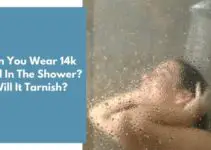It can be a disaster if your kitchen or bathroom sink won’t drain. The water’s backing up and getting out of hand, or your sink’s full of dirty dishes waiting to be cleaned, and it is stressing you out. The mess brought by a clogged drain can be terrible and annoying.
Unfortunately, clogs can’t be avoided. It is typically caused by built-up grease, crumbs, dirt, or hair. If you are troubled with a clogged drain and already tried some home remedies, but it is still not working, maybe it’s time to step up your game plan.
A chemical drain cleaner like Drano is a handy go-to cleaner almost everyone uses to clear clogs fast. It is one of the most well-known chemical clog cleaners in the market. The product is made up of aluminum, salt, bleach, sodium nitrate, and lye.
Drano is a popular drain cleaner used to unclog kitchen sinks, bathroom sink, showers, or even clogged tubs. It is recommended to unclog even the most challenging drains.
The company even offers a 100% money-back guarantee if the product does not successfully unclog your drain. Learn more as we share with you the things that could happen if you leave Drano overnight.
Contents
Can I leave Drano overnight?
Many households choose Drano because you don’t need to have special skills or training to use it. You can just open the bottle and use the product into the drain. It is said to have the power to solve your clogging problem in as early as 15 minutes.
Instead of calling for a plumber, many people opt to use chemical drain cleaners. It is certainly cheaper than paying a professional to do the job.
The official website of Drano says that it can be safely used with plastic and metal pipes. You just have to read and follow the directions in the product accurately.
If you follow the product’s instructions correctly, then there can be no harm in leaving Drano on your sink overnight.
What happens if you leave Drano overnight?
Usually, drain cleaners are left for about 15 minutes up to half an hour before flushing it with hot water. For more stubborn clogs, some people are opting to let it sit overnight. This process also works with Drano.
If you let Drano sit on your sink overnight, then the product will stay on the pipes longer. The process of leaving it overnight can be beneficial if you have stubborn clogs built upon the pipes for a long time. It gives the chemicals in the cleaner ample time to do their job.
What happens if I forgot to flush Drano?
There are instances when we are so caught up by the daily stress of life and forget the little concerns that we have at home. It is inevitable, but what about the results?
You might have encountered a clogged sink while you are so exhausted. You decided to just pour on some Drano on it. You must have hoped that it can do the job on its own, and you forgot to flush it down. Don’t be frantic because there can be no serious harm done to your pipes if it is your first time using Drano on it.
The problems may occur if you keep on using Drano on the same drain every time it clogged. Chemical drain cleaners may damage metal pipes when used excessively in one area. You may be using Drano to address the same clog in the same place, again and again. Using it a lot can eventually lead to pipe problems.
Can you leave Drano Max Gel in overnight?
Just like any other commercially available chemical drain cleaners, it is advised that you let the product sit for about 15 minutes before flushing it down with water. In the instance that the clog is a bit problematic than usual, it is advised that you let it sit overnight.
For more significant clogs, you can apply the Drano Max Gel overnight. After that, you have to wait for another six hours before you flush it down with warm water. The product is a thick gel that sticks to all types of clogs and dissolves them.
The only risk in using chemical cleaners is if you use them many times on the same sink. It can cause PVC pipes to soften or break, and the glue that holds the tubes together can also melt. Fortunately, Drano Max Gel is said to have a unique ingredient to prevent pipe corrosion.
Does Drano damage pipes?
How does it work? Many households choose Drano because it is very convenient to use. You just need to run the product into the clogged drain and wait for the magic to happen. You may be tempted to grab and run on some Drano whenever you have a clogged sink in the house. Sometimes, the instant gratification of having an instant fix for small problems can cause long term repercussions.
If it is just one-time use, there will certainly be no problem. Again, it can only damage plastic or metal pipes if used in the same place continuously.
In some instances, Drano can make the clog worse. There are times when the clog may turn into a solid and congealed mass. It would be harder to melt it even if you use a lot of chemical cleaners. The mass can turn into a total blockage in the drain, and you will have to ask for a professional plumber to fix it.
When should you not use Drano?
Drano is proven to be a reliable solution for your clogged drains, but there are events in which you should not use it because it can only worsen the problem. Here are some of the instances where you should not use Drano.
- Do not use Drano with a plunger because you could accidentally splash some of the product on your skin. It should not have contact with your skin or eyes because it can cause severe irritation. If you inhale the fumes, it can also have some bad effects on your lungs.
- Do not mix Drano with another chemical product or cleaner because you can never be sure of what chemical reactions may occur. If you decide to try another chemical with the Drano, such as bleach, you may risk producing toxic gases. These gases can cause eye irritation and difficulty in breathing.
- Please do not use it on old corroded pipes. The chemical component of Drano can soften and break pipes because of its strong composition. It can eat away the glue holding the pipes together. The plumbing repairs, in the long run, will be more costly.
- According to Drano’s manufacturers, it should not be used in toilets because there is a trap mechanism in toilets that is different from the sinks. The trap mechanism prevents the product from reaching the cause of the plumbing problems. It can cause toilet bowls to crack and PVC pipes to melt.
- The fixture of the toilet’s drain is different from the structure of the kitchen or bathroom sink. Drano’s chemical component was designed to specifically reach clogs that form in the pipe underneath the sink. A toilet’s drain is constructed differently. Drano cannot reach the problematic area of the toilet.
- The Drano’s chemical makeup is made to dissolve the clog by oxidizing chemical reaction. The primary process of oxidizing generates heat. If you use it in a toilet, the product will sit on the pipe or porcelain. It can cause the porcelain to crack or the pipes to melt and burst.
- Make sure that you do not use the sink after you pour Drano on it. You should wait for another 24 hours before you can safely use the sink again. The product is made to dissolve virtually organic matter, so you should be careful about handling it.
Summary
If you can’t address your clogged sink with a chemical cleaner, it may be best to call a licensed plumber. There are some easy-peasy home remedies and tricks that you can try. When all else fails, and Drano did not work, here is what you can do.
You can pour half a cup of baking soda into your drain. Five minutes after you pour the baking soda, you can pour one cup of vinegar. The baking soda and vinegar will fizz for a short time, and you can leave it for 30 minutes. Flush it with running hot water and check if it got rid of the entire clog.
Chemical cleaners can cause leaks or busting pipes. It can cause your pipes some damages and deteriorate in the long run. Remember that although Drano is a quick fix, it is not a long term solution.
Regardless of how minor your clogging problem is, it is advised that you deal with it together with a plumbing professional. If you experience persistent clogging issues, it is recommended that you call an expert drain cleaning specialist. They have the equipment to examine your drains properly. The professional plumbers can find the root cause of your drain problem and provide long term solutions for you.
Resources
Image credits – Canva




